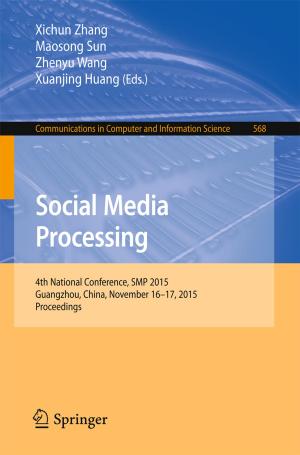Tax Incentives for the Creative Industries
Business & Finance, Finance & Investing, Taxation, Economics| Author: | ISBN: | 9789812878328 | |
| Publisher: | Springer Singapore | Publication: | January 4, 2017 |
| Imprint: | Springer | Language: | English |
| Author: | |
| ISBN: | 9789812878328 |
| Publisher: | Springer Singapore |
| Publication: | January 4, 2017 |
| Imprint: | Springer |
| Language: | English |
This book combines insights from cultural economics, public finance, and tax law, providing an accessible and comprehensive introduction in the application of tax incentives for the creative industries. It does not have a single-country focus, but instead uses the perspective and examples of various countries around the world. The book starts with a theoretical part, introducing the concepts of creative industries and of tax incentives: how can the creative industries be defined, why do governments support the creative industries and how can tax incentives be applied as policy instrument. In the globalized and digitalized world in which the creative industries operate, restrictions imposed by guidelines on harmful tax competition and state aid and regulations influencing the (im)possibility of applying tax incentives in cross-border situations have a great impact. For that reason these legal concepts are discussed as well in the theoretical part. Globalization also gives rise to questions on the cross border application of tax incentives. The example of cross border giving is discussed in this respect. The theoretical part is followed by a part that focuses on tax incentives for specific sectors of the creative industries: museums and cultural heritage, the audiovisual industries (film, tv and videogames), the art market, copyright and artists. This part uses insightful examples from various countries to illustrate the application of these tax incentives. As the book takes both an academic and a practical approach, it is of relevance to researchers, students, policy makers and readers involved in the creative industry who seek an in-depth and up-to-date overview of this alternative way for governments to support the creative industries.
This book combines insights from cultural economics, public finance, and tax law, providing an accessible and comprehensive introduction in the application of tax incentives for the creative industries. It does not have a single-country focus, but instead uses the perspective and examples of various countries around the world. The book starts with a theoretical part, introducing the concepts of creative industries and of tax incentives: how can the creative industries be defined, why do governments support the creative industries and how can tax incentives be applied as policy instrument. In the globalized and digitalized world in which the creative industries operate, restrictions imposed by guidelines on harmful tax competition and state aid and regulations influencing the (im)possibility of applying tax incentives in cross-border situations have a great impact. For that reason these legal concepts are discussed as well in the theoretical part. Globalization also gives rise to questions on the cross border application of tax incentives. The example of cross border giving is discussed in this respect. The theoretical part is followed by a part that focuses on tax incentives for specific sectors of the creative industries: museums and cultural heritage, the audiovisual industries (film, tv and videogames), the art market, copyright and artists. This part uses insightful examples from various countries to illustrate the application of these tax incentives. As the book takes both an academic and a practical approach, it is of relevance to researchers, students, policy makers and readers involved in the creative industry who seek an in-depth and up-to-date overview of this alternative way for governments to support the creative industries.















